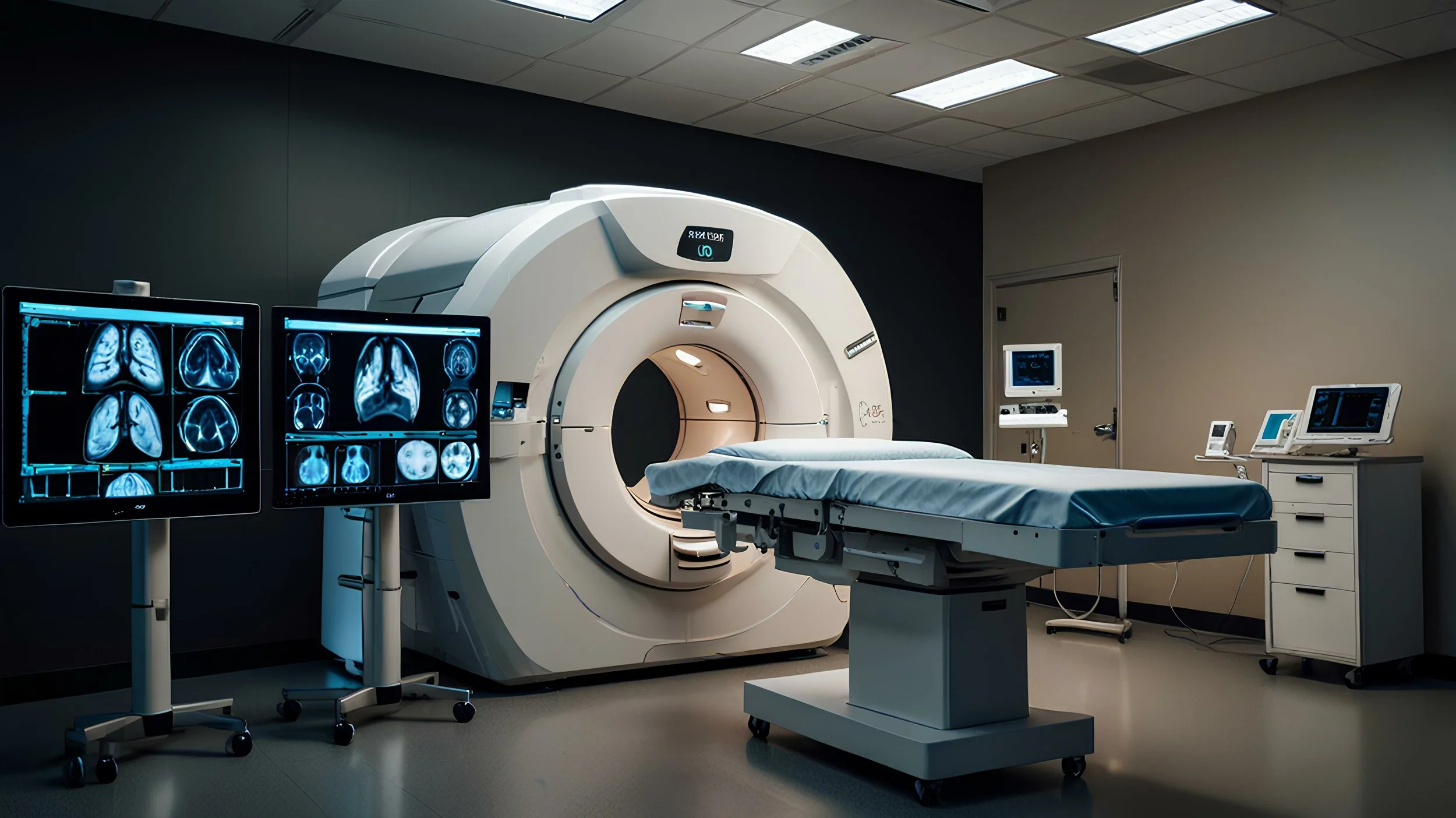FDA Q-Submission Program 2025: What Medical Device Innovators Need to Know
The FDA's Q-Submission Program (as updated in May 2025) represents one of the most powerful tools available to medical device developers seeking to de-risk regulatory pathways and accelerate time-to-market. For companies navigating complex device classifications, novel technologies, or uncertain regulatory requirements, the strategic use of Q-Submissions can mean the difference between smooth approval processes and costly delays.
At Biomedical Statistical Consulting® (BSC®), we've supported hundreds of successful FDA submissions over our 35+ years of regulatory biostatistics expertise. Our experience with Q-Submissions spans from early-stage Pre-Subs for breakthrough orthopedic and spine devices to complex Study Risk Determinations for AI-powered diagnostics. This comprehensive guide draws from that experience to help you understand not just what Q-Submissions are, but how to use them strategically to advance your regulatory objectives.
What Is the Q-Submission (Q-Sub) Program?
The Q-Submission Program enables medical device companies to seek feedback and request meetings with the FDA before formally submitting marketing or investigational applications. The guidance covers voluntary, nonbinding interactions designed to clarify requirements, resolve issues, or inform regulatory or clinical strategy. These touchpoints can lead to more efficient development and review processes for new medical devices.
| Q-Sub Type | Purpose/Use Case | Typical FDA Response | Standard Timeframe |
|---|---|---|---|
| Pre-Submission (Pre-Sub) | Request written feedback (and optionally a meeting) on specific questions before an intended submission. | Written feedback, with optional meeting | ~70 days (target, not guaranteed) |
| Submission Issue Request (SIR) | Get input on resolving issues flagged in a hold letter on an open submission (e.g., 510(k) deficiency, IDE hold). | Written feedback or a meeting | 21–70 days (depending on complexity and timing) |
| Study Risk Determination | Ask FDA to determine if a proposed clinical study is significant risk, nonsignificant risk, or exempt. | Written determination | Typically within 90 days |
| Informational Meeting | Share information with FDA—no expectation of feedback (e.g., update on new tech or pipeline). | Meeting (informational only) | Typically within 90 days (as resources allow) |
| PMA Day 100 Meeting | Review status of an original PMA ≤100 days after FDA files the application (upon request). | Meeting | By 100th day from PMA filing |
While Breakthrough Devices, STeP, and Accessory Classification Requests may involve Q-Sub-like interactions, they are governed by separate guidance documents and are not distinct Q-Sub types under the May 2025 guidance.
When NOT to Use the Q-Sub Program
Not every interaction qualifies for a Q-Submission. You should not submit a Q-Sub if:
You only need administrative clarifications (e.g., timelines, contact details).
Your question is about device classification or Center assignment—these require a 513(g) Request for Information or a Request for Designation (RFD).
Your inquiry relates to an active review (communicate interactively with FDA reviewers instead).
The topic is a formal appeal (handled separately).
The request involves Emergency Use Authorization (EUA) or TAP pilot participation.
Strategic Timing Considerations
Early Engagement Strategy: The most successful companies use Q-Submissions as part of a broader regulatory strategy from the earliest stages of device development. Consider submitting a Pre-Sub during the design control phase, particularly when your device incorporates novel technologies, AI/ML algorithms, or addresses unmet clinical needs where predicate devices may be limited.
Clinical Trial Planning: For devices requiring clinical data, submit Pre-Subs 6-12 months before planned study initiation. This timeline allows adequate opportunity to incorporate FDA feedback into protocol design, endpoint selection, and statistical analysis plans. The Study Risk Determination Q-Sub proves particularly valuable for novel devices where the risk classification isn't immediately obvious, helping sponsors avoid delays in IRB review and study initiation.
Breakthrough Device Integration: Companies pursuing Breakthrough Device Designation should coordinate Q-Sub timing with their designation request. The enhanced communication opportunities available through the Breakthrough pathway can be strategically combined with well-timed Pre-Subs to maximize regulatory alignment and feedback quality.
Advanced Q-Sub Strategies
Sequential Submissions: For complex devices, consider a phased approach with multiple Q-Subs addressing different development stages. Start with fundamental regulatory pathway questions, then progress to specific testing requirements, clinical trial design, and finally submission strategy.
Cross-Center Coordination: For combination products or devices with software components, early clarification of Center assignment through an RFD can prevent later complications. Some companies benefit from parallel discussions with CDRH and CBER when biologics are involved.
Breakthrough Device Designation: If your device qualifies, pursue this designation early as it provides enhanced communication opportunities beyond standard Q-Subs, including more frequent meetings and expedited review processes.
Common Pitfalls and How to Avoid Them
Question Formulation Errors: Many companies submit overly broad questions like "What are the requirements for our device?" These generic inquiries typically yield equally generic responses that provide little actionable guidance. Instead, structure questions around specific regulatory pathways, predicate device comparisons, or particular aspects of your development plan. For example: "Given our device's novel mechanism of action X and intended use Y, would FDA consider predicates A, B, and C appropriate for substantial equivalence comparison in a 510(k) submission?"
Documentation Gaps: Ensure your Q-Sub includes sufficient technical detail for FDA to provide meaningful feedback. Include comprehensive device descriptions, intended use statements, preliminary design information, and any relevant preclinical data. Insufficient information often leads to generic responses that don't advance your regulatory understanding or may result in requests for additional information that delay feedback timelines.
Meeting Dynamics and Preparation
Meeting Preparation: If requesting a meeting, prepare extensively. Develop slide presentations that clearly articulate your questions, provide FDA with background materials at least 5 business days in advance, and prepare specific scenarios or examples. The most productive meetings have clear objectives and allow for interactive discussion rather than one-way presentations. Consider conducting internal mock meetings to anticipate potential FDA questions and refine your messaging.
Stakeholder Alignment: Ensure your internal team (regulatory, clinical, quality, and technical) is aligned on the questions and desired outcomes before submission. Post-meeting, document FDA's feedback comprehensively and share with all relevant stakeholders to ensure consistent implementation across development activities. Create action items with clear ownership and timelines for incorporating feedback into your development plan.
Technology-Specific Considerations
Software and AI/ML Devices: These technologies require particular attention to software lifecycle processes, algorithm transparency, and post-market monitoring plans. The FDA has published specific guidance for AI/ML-enabled medical devices that should inform your Q-Sub questions. Consider addressing algorithm validation, training data adequacy, and predetermined change control plans in your submissions.
Novel Technologies and Combination Products: For devices incorporating emerging technologies or biologics components, focus Q-Sub questions on classification pathways, appropriate testing methodologies, and clinical endpoint selection where established standards may not exist. Early clarification of the Center assignment through a Request for Designation (RFD) can prevent complications later in development.
Economic and Business Considerations
Resource Investment: While Q-Subs require upfront investment in preparation and potentially user fees, they typically provide significant return on investment through reduced development timelines, avoided regulatory surprises, and clearer pathways to market. Budget for expert regulatory consulting if your internal team lacks experience with the specific device type or regulatory pathway.
Competitive Intelligence: Use Q-Subs strategically to understand FDA's evolving perspective on emerging technologies in your therapeutic area. The insights gained can inform not just current development but future pipeline decisions, providing competitive advantages in rapidly evolving markets like digital therapeutics or AI-enabled diagnostics.
Key Takeaways for a Successful Q-Sub
Be Clear and Specific: Identify your device, intended use, and key questions. Well-formed, targeted questions yield more useful, actionable feedback.
Limit the Scope: The FDA recommends focusing on no more than 3–4 substantial topics per submission. Overloading a Q-Sub can delay or dilute feedback.
Plan Ahead: Pre-Subs are best submitted well before clinical studies begin or regulatory decisions are needed.
Follow Documentation Best Practices: Include a cover letter with detailed contact info, a clear request type, and any previous relevant interactions. If requesting a meeting, propose several dates and provide a draft agenda.
Leverage Electronic Submissions: Use the CDRH Portal or FDA Electronic Submission Gateway for faster, trackable processing. Note: As of July 2025, FDA has released a draft ‘pre-STAR’ template for electronic Pre-Sub submissions, which is expected to become mandatory after finalization. Until then, CDRH Portal remains the preferred method.
Keep Records: All Q-Subs are confidential within the bounds of law, but official meeting minutes and written feedback become part of the formal file.
Post-Q-Sub Implementation
Regulatory Strategy Documentation: Create formal documentation of FDA feedback and how it's being incorporated into your development plan. This becomes crucial during actual submission preparation and can be referenced in future Q-Subs or submission correspondence.
Change Management: As development progresses and designs evolve, assess whether changes materially affect previous FDA feedback. Sometimes follow-up Q-Subs are warranted to confirm continued alignment with FDA expectations.
Updates in 2025
The May 2025 guidance aligns with FDA’s ongoing efforts under MDUFA V, clarifies the boundaries of Q-Sub versus other communication pathways, and provides enhanced examples of well-structured questions to maximize FDA engagement. It introduces revised timelines, acceptance checklists, and best practices for both industry and regulators, reflecting lessons learned from user fee amendments and emerging technologies.
Conclusion
Getting FDA feedback early and often through the Q-Submission Program represents one of the smartest investments medical device companies can make in their regulatory strategy. The program offers unparalleled opportunities to align with FDA expectations, reduce development timelines, and avoid costly regulatory surprises that can derail even the most promising innovations.
Success with Q-Submissions requires more than just technical knowledge—it demands strategic thinking, precise communication, and deep understanding of regulatory priorities. Companies that master this process, often with experienced regulatory biostatistics partners, consistently achieve faster time-to-market and more predictable approval outcomes.
Whether you're developing breakthrough spinal implants, AI-powered diagnostics, or complex combination products, the Q-Submission pathway can provide the regulatory clarity and confidence needed to move forward decisively. The investment in thoughtful Q-Sub strategy pays dividends not just for individual products but for building institutional knowledge that informs future pipeline decisions.
Ready to leverage the Q-Submission Program for your next regulatory milestone? At BSC®, we've guided clients through hundreds of successful Q-Subs across diverse device types and regulatory pathways. Our team combines deep FDA experience with cutting-edge biostatistical expertise to help you ask the right questions, present compelling evidence, and achieve the regulatory outcomes your innovation deserves.
Contact BSC® today to discuss how strategic Q-Submission planning can accelerate your path to market and strengthen your competitive position.
For further details or templates, refer to the full FDA guidance or contact the appropriate FDA office identified in the document. When working with experienced regulatory partners like BSC®, ensure they are deeply familiar with both the Q-Submission process and your specific therapeutic area or device type.
Source: https://www.fda.gov/media/114034/download
About Biomedical Statistical Consulting®
Since 1986, Biomedical Statistical Consulting® (BSC®) has provided regulatory-grade biostatistical services for medical device companies navigating FDA submissions. Our team combines deep regulatory expertise with advanced statistical methodologies to help clients design studies that meet FDA expectations and accelerate approval timelines. From Q-Submission strategy to PMA support, BSC® serves as your strategic partner in transforming innovative devices into approved therapies.


